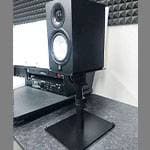Hello, readers of OTOYA News! Nice to meet you! I’m guitarist Takayoshi Ohmura.
Thanks to a fortunate opportunity, I’ve been given the chance to write this column!
Though I’ve been a complete amateur when it comes to gear for nearly 20 years, I hope this will be of some help to you.
What I’ll be writing about is my beloved guitar amp speaker units!

Since this is a completely newly written column, I’ll be diving into a topic that’s as straightforward as it gets and uniquely my own: “Speaker Units According to Takayoshi Ohmura”. I’ll do my best to make this piece resonate with fellow speaker unit enthusiasts, and hopefully even spark some new ones!
Everything below reflects my personal impressions, opinions, methods, and judgments as Takayoshi Ohmura. Please consider it as just one individual example.
Yes, it’s quite biased, but I hope you’ll read on with a warm gaze and an open mind.
■ Abbreviations and Terms Used in This Article
- Amp Cabinet:Cabinet
- In-Ear Monitor:IEM
- Equalizer:EQ
- Kemper STAGE:Kemper
- G12M Greenback:Current Greenback
- RIG:A general term for the amp and effect setting data used with Kemper
The speaker unit I’m currently using is a 12-inch model from the world-renowned brand CELESTION.
CELESTION speaker units are installed in many guitar amps and cabinets, so even if you’re not familiar with the specific models, there’s a good chance you’ve at least heard the brand name before.
My Gear Introduction
First, let me introduce the gear I use during live performances and such:

- Guitars: ESP / SNAPPER Ohmura Custom (various models), SNAPPER-7 Fujioka Custom
- Pickups: Seymour Duncan / STK-S1, STK-S10; EMG / 81, 85, etc.
- Amp Cabinet: Marshall / 1936(a cabinet inherited from Mikio Fujioka)
- Internal Cabinet Wiring: Marshall / 198X-50-00-S (current model)
- Power Amp: ORANGE / Pedal Baby 100(with genuine power cable)
- Speaker Cable: HOSA / SKJ-403 (14 AWG)
- Guitar Wireless System: SHURE / GLXD1

- Guitar Amp: Kemper Profiling Amplifier / PROFILER STAGE
- Pedals:
SHURE / GLXD6
CONISIS / Black Messiah(Gain switch OFF)
JIM DUNLOP / EP101 ECHOPLEX(Knob set at 12 o’clock)
Beyond / Beyond Tube Buffer 2S(Gain knob OFF)
KORG / XVP-20 - Guitar Cables: OYAIDE / G-SPOT Cable , Ecstasy Cable , QAC-222G , etc.
- Patch Cables: LIVE LINE / REV Patch
- Cable for SHURE GLXD16:OYAIDE / WL-606 , WL-606II
- Power Supply:STRYMON / Ojai
- DC Cables:OYAIDE / DC-3398
- Power Cable:The NUDE CABLE / D-TUNE Type-B
- Power Strip:PERFECTION / PFT-T650C
Here is a list of previously used gear:
- Speaker Units:EMINENCE / Swamp Thang (150W) , HempDog 12 (150W)
- Power Amp:SEYMOUR DUNCAN / Power Stage 200
- Tube Buffer:Lee Custom Amplifier / LCA 12AU7BB
- Power Cables:OYAIDE Custom×3
- Speaker Cables:LAVA CABLE / LAVA TEPHRA
- Cabinet Internal Wiring:LAVA CABLE / LAVA TEPHRA
To create the ideal guitar sound, it's necessary to examine each piece of equipment and consider the overall balance. Rather than focusing solely on a single component—like a specific piece of gear or just the speaker unit—it's important to view tone shaping as something fluid. Thinking this way can help prevent frustration and struggles in the pursuit of your sound.
The Presence of Guitar Amp Speaker Units
In Japan’s guitar scene—though that may be too broad a statement—speaker units rarely take center stage in conversations. When it comes to guitar amps, the discussion typically revolves around the amp head or the cabinet (specifically, the exterior). Personally, I only get the chance to talk about speaker unit models or specs a few times a year, and only among fellow speaker unit enthusiasts.
(*By the way, I'm currently recruiting fellow speaker unit fans.)
In recent years, digital modeling amps and amp simulators (including software-based ones) have become increasingly widespread, making direct line sound the mainstream. Additionally, with the growing use of in-ear monitors on stage, the demand for digital amps that can deliver a consistently stable guitar sound has risen even further.
Nowadays, line recording has become the standard even for studio work. As a result, cabinets and speaker units are increasingly being virtualized, and it’s becoming rare to see someone owning a physical cabinet.
From my perspective, it simply comes down to: “Choose what suits your preferences, environment, and situation.”
This is exactly the approach I take. I use a cabinet for domestic performances, but for recent overseas support gigs and tours, I haven’t used a cabinet at all.
(*Just a reminder—this is a column about speaker units.)
Reasons for Using or Not Using a Cabinet
So then, why do I not use a cabinet domestically in Japan, but not for overseas support shows? Let’s start with why I don’t use a cabinet overseas.
Overseas support shows are typically held in venues like halls or outdoor stadiums with audiences of over 10,000 people. All performances use in-ear monitors (IEMs), and since the vocal is the main focus, the instrumental sound, especially anything that might bleed into the vocal mic, is kept to a minimum.
It’s not uncommon for me to get requests like, “You can use a cab, but could you keep the volume low?” Since I have no problem performing with IEMs, I choose not to use a cabinet as a form of risk management.
That said, some guitarists still want to use a cabinet to feel the sound behind them or to perform feedback techniques. I myself also use cabinets when playing in smaller venues such as live houses.

In overseas support shows, the stage doesn’t have a speaker cabinet; performances are done using only the Kemper, pedals, and guitar with a completely line-based sound.
For example, in videos, you can hear no guitar or amplifier sound immediately behind me (on the stage side, the side where the camera is), only the guitar sound bleeding over from the audience side.
Next, the reason for using a cabinet in domestic shows is primarily to deliver the guitar sound to the front rows near the stage floor.
Most live houses have the main speakers positioned near the sides of the stage, so if a guitar amp isn’t placed on stage, the audience near the front mostly hears just the drums’ natural sound.
Although I’m the type who can perform without needing to hear my own guitar sound directly (I rely on the sound bleeding in from the environment, so I can manage without a cabinet), I still use a cabinet so that the audience right in front of me won’t miss out.
The Impact of Using a Cabinet on Others
Now, the interesting thing is that it’s not simply putting the cab down and then it’s perfect. Once it’s been placed, the guitar feel and playing experience are greatly affected.
Regarding the feel of playing, if the cabinet doesn’t produce the best tone, you simply can’t keep playing comfortably.
Of course, even in the worst conditions, it’s not impossible to play, but the better the tone, the better it is, right?
*Here, “better” is defined as the tone and timbre being what the player ideally wants.
Naturally, the quality of the tone also influences the performance itself.
I mainly shape my sound using Kemper’s direct line output (without miking the cabinet), so as long as I play normally, I can record a stable sound. However, when I use a cabinet at a certain volume, as I mentioned earlier, it affects not only the playing feel and performance but it also adds feedback and, in some cases, howling, making it a completely different experience from playing with just the line sound.
Note: The Kemper RIG’s amp heads are Suhr, FRIEDMAN, and EVH. The cabinets use Marshall and FRIEDMAN IRs (Impulse Responses), which also feature CELESTION models.
In the live footage below, the main guitar sound is from the Kemper line output, and no microphones are placed on the cabinet.
Since it’s a live show, ambient mics capture the venue’s sound as well, but that includes almost no influence from the cabinet sound that mainly records the audience-side floor sound.
【#Ohmura Takayoshi】Pleasant Surprise【LIVE Music Video】
Returning to the topic, along with the previously mentioned influence from the cabinet sound, there is the essential task of creating a sound that the front-row audience can enjoy, which is the most important point.
Since Kemper’s main sound is shaped by the line output and there are differences and gaps between the line sound and the sound coming from the cabinet, the cabinet’s sound needs to be crafted separately.
Kemper has an output menu with volume adjustment and EQ (for high, mid, low, and ultra-high frequencies) specifically for the cabinet. Additionally, the ORANGE power amp has volume and high/low EQ controls, allowing for a certain degree of tone and sound adjustment. However, it can be quite difficult to achieve a perfectly satisfying sound when using rental cabinets at rehearsal studios or concert venues.
そThis is where purchasing your own cabinet comes in.
From there, to get even closer to your preferred sound, you ultimately arrive at choosing the speaker units inside the cabinet.
Of course, after selecting speaker units, my passion spreads to other gear, including internal wiring and speaker cables, but I’ll save that topic for another time.
My Rough Speaker Unit History
As for my history with speaker units, I have not only used the current CELESTION units (from 2004 to 2018, and from 2024 to the present) but also EMINENCE units (from 2018 to 2024).
I have always had a strong passion for amps and cabs, and around 2017, my interest in speaker units intensified, leading me to become an EMINENCE user. However, with the renewal of my gear, including the rigs I use with Kemper, I returned to my roots in 2024, marking the 20th anniversary since my debut. I focused on the Celestion units I had liked from the past, particularly the Greenbacks and models with smaller power handling capacity. After comparing and testing not only current models but also vintage units, I felt that the best match was the current Greenback model, the G12M Greenback.

Around that time, guitarist Li-sa-X supported me in comparing and testing speaker units and cabs. Since she’s a Laney artist and also interested in other Laney cabs, we visited the Sound House showroom, the official Laney importer, to try out some cabs together.
When I heard the sound of the Laney LIONHEART LT212(equipped with CELESTION G12H Anniversary 16Ω×2), it became clear that I was deeply drawn to Celestion’s vintage-style models.
At the same time, I didn’t just compare and test individual speaker units but I also compared and tested cabinets from Marshall, Laney, FRIEDMAN, Bogner, Vox—all of which use Celestion speakers. I also experimented with differences in impedance, series vs. parallel wiring, closed-back vs. open-back designs, and variations in volume and EQ settings between the Kemper and power amplifier.
Below are the speaker unit models that I have used or tested so far.
● CELESTION
[Model Name: Power Handling]
- G12M-20 Heritage:20W
- G12 EVH:20W(owned but unused)
- G12M-25 Greenback (current model & ROLA era): 25W
- G12H Anniversary:30W
- G12H(55Hz) Heritage:30W
- Vintage 30:60W
- G12-65 Heritage:65W
- G12 Vintage:70W
- G12M-70:70W
- G12T-75:75W
- G12M-65 Creamback:65W
- G12H-75 Creamback:75W
- Seventy 80:80W
- G12-K100:100W
● EMINENCE
- Swamp Thang:150W
- HempDog 12:150W
- Legend 1218:150W
- Texas Heat:150W
- The Tonker:150W
- The Wizard:75W
- Private Jack:50W
- Cannabis Rex:50W
- JCA12-1716:70W
● Others
- Laney / H1280:80W
- VHT / ChromeBack:60W
And Now
After using the current Greenback for about a year since 2024, its sound has mellowed out, with the harsh edges smoothing away and a reduction in the “pleasant impurities”. This resulted in a different kind of clarity, cleanliness, and refreshing crispness compared to the initial sound. I thought, “Maybe it’s time for a replacement?” Although I could have simply replaced it with a brand-new one of the same model, I became curious about trying the G12-65 Heritage that I had used around 2017, so I mounted a new one.

Because the current Greenback has a low power handling capacity of 25W, I was always careful with the volume. However, the G12-65 Heritage handles 65W, so the risk of blowing the speaker at high volumes was reduced.
My immediate impression when playing the G12-65 Heritage was that my best sound might actually be the brand-new current Greenback.
The crunchy feel and the sharp “zing” the Greenback produces right at the start, along with its great compatibility with all of my RIGs, and the ability to achieve my ideal sound in a flat, natural state were all very appealing.
As I have mentioned many times, the only drawback is the small power handling capacity. But after about a year of use, the volume was obviously enough to reach the audience in the front rows, and the natural saturation from that low power handling was just right.
In contrast, the ‘G12-65 Heritage’ also possesses the vintage-style characteristic high-end sparkle along with a pleasant fullness and bite. Compared to the current Greenback, it sounds milder and cleaner, without any biased tonal quirks in the frequency balance.
When played with the same settings as the current Greenback, adding a little treble via the power amp’s EQ brought the mid-to-super high frequency balance closer to that of the current Greenback.
Also, the sound of the G12-65 Heritage is by no means modern, nor is it fully leaning into a vintage character. It delivers an old-school sound with a strong forward presence that punches through the mix, and it was well received by my band members along with the sound itself.
Compared to the current Greenback, it has a clearly stronger sense of fullness and pressure, giving a more powerful impression.
In the video, I’m using the G12-65 Heritage wired as 15Ω×2.
I’m shocked to say this, but I think it’s got a wonderful tone.
t’s hard to believe this is the sound of a brand-new speaker that was installed just the day before and played for less than an hour.
It conveys delicate dynamic expression, a perfect balance between thickness and clarity, and rich harmonics and sustain that come through clearly.
I’ve only played one live show with them so far, so the speakers aren’t fully broken in yet. For now, I’d like to keep playing and see how the sound evolves as they age and settle in.
As you’ve probably gathered from reading this far, I (Ōmura) really like the sound of brand-new speaker units, so if you pick one up from Sound House, you can experience the same fresh tone that I do.
So, to sum it up:
If you prefer a more delicate and guitar-like sound, I recommend the current Greenback.
If you want more power and a cleaner tone than the current Greenback, go for the G12-65 Heritage.
The current Greenback offers clearer, crunchier tone quality and character, and may feel like it has a wider dynamic range because of that.
Both models, though, have excellent distortion character and tonal clarity in driven sounds, with just the right amount of gain and reproduction. They’re so much fun to play that you’ll find yourself wanting to keep playing for hours — they’re truly outstanding speakers.
Note: When comparing Greenbacks, people often mention CELESTION’s Creamback series. Personally, however, I feel that the ‘G12-65 Heritage’ is a better tonal match or alternative.
How to Choose a Model Based on Impedance
By now, I’m sure there isn’t a person reading this who has not clicked over to the speaker unit product pages on Sound House, right? If you’ve checked them out, you’ve probably noticed that different impedance versions of the same speaker unit are available.
For example:
The current Greenback comes in both 8Ω and 16Ω models.
The ‘G12-65 Heritage’ is available in 8Ω and 15Ω versions.
When I was using EMINENCE models, I used two 8Ω speakers wired in parallel, which gave me a 4Ω load. I also used 12–13 AWG internal wiring and speaker cables to achieve a clear and loud sound.However — and this is important — matching the speaker impedance to your amp is critical. If they don’t match, you won’t get the speaker’s full potential, and worse, you risk damaging your amp due to the added load. So, please don’t try to copy this setup without having any idea what you’re doing.

I also own CELESTION 8Ω models and have tried connecting two of them in parallel for a total impedance of 4Ω. However, my personal preference in terms of sound quality was with two 8Ωspeakers wired in series to achieve a 16Ω load.
The downside of series wiring is that if one speaker blows, both will stop producing sound entirely, which presents a significant risk. This is why, as a sort of reluctant compromise, I’m currently using two 16Ω(or 15Ω) speakers wired in parallel to create an 8Ω load.
Technically speaking, the 8Ωconfiguration has the advantage of allowing more current to flow, which can translate to higher volume. But it’s not as simple as saying louder is better or quieter is worse. When choosing a speaker unit, it’s important to consider your amp’s impedance, the speaker unit’s impedance installed in your cabinet, and whether you plan to rewire between series and parallel in the future. Each configuration has its own pros and cons, and these factors should be part of your decision-making process from the beginning.
In addition, when it comes to all kinds of gear and tone crafting, it’s easy to become obsessed with numerical values, whether that’s amp knob positions, digital parameter settings, power ratings, or impedance specs. This is particularly true with digital gear, where there’s a tendency to default to round up to whole numbers. However, I strongly recommend making sound decisions based on your ears, your emotional reactions, and the sensations that excite you, whether that’s the thrill of the tone, goosebumps, or just sheer enjoyment. Let your ears and your heart guide your sound more than the numbers.
Future Plans
What I’m most eager to try right now is the G12 EVH!
This is a signature model created for Eddie Van Halen and is based on the G12M-20 Heritage.

With a power handling of 20W, it's even lower than the 25W rating of the current Greenback, so in my rig, it will likely require careful volume control. However, pairing it with a G12-65 Heritage in a mixed setup might yield an interesting result.
He’s hoping to try it out as soon as this summer, and if any cool discoveries come from it, I plan to share them with everyone.
In Closing
I often hear from fans that my fan club columns tend to run long, so this time I have done my best to keep this speaker unit column as concise as possible — or at least to the limit of what I could manage! So, how was it?
To me, speaker units are much like pickups; they’re a piece of gear that can dramatically transform your sound character with relative ease.
Of course, while speaker units require a cabinet and tend to be heavier, so they’re not quite as casual to swap as pickups, I see their accessibility more on the level of changing guitar strings. It’s certainly not as intimidating as one might think.
If you already own a cabinet, or are thinking of buying one, renting cabinets at studios or live houses, or you are simply a fan who often attends shows to see your favorite band or guitarist perform, and if today’s column sparked even a little curiosity about speaker units, then next time you’re at a show or checking gear online, try paying attention to the cabinet being used and what speaker model is inside. Guitar magazines and online gear rundowns often include equipment photos, making it easy to start noticing.
Who knows—this awareness might deepen your appreciation for guitar tones, amps, and even increase your enjoyment of the bands or players you support.
That’s all for now—thank you so much for reading to the end!
Next time… maybe I’ll talk about wood types but that might not be possible.
《 Takayoshi Ohmura Column Publication Commemorative Giveaway Campaign 》
Among those who participate, winners will be chosen by lottery to receive speaker units owned by Ohmura-san with his handwritten signature ♪
① Follow the official Soundhouse X account( @Soundhouse_jp)
② Repost the relevant campaign post on X
※ Winners will be contacted via DM on X.
Entry period: Tuesday, August 12, 2025 – Sunday, August 31, 2025
Prizes: Speaker units owned by Ohmura-san (with handwritten signatures)
- CELESTION / G12M Greenback 16Ω
- EMINENCE / SWAMP THANG 8Ω
- EMINENCE / HEMPDOG 12 8Ω

The column “sound&person” is supported by submissions from our readers.
For details about submissions, click here.







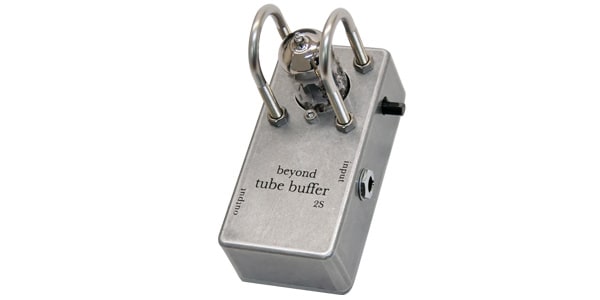
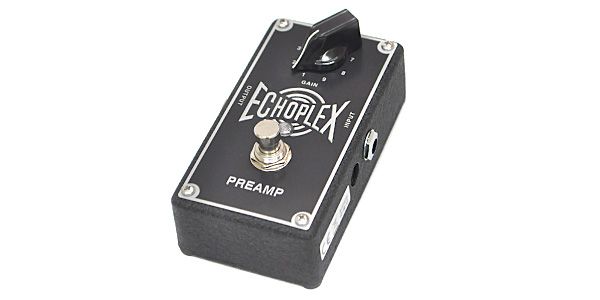
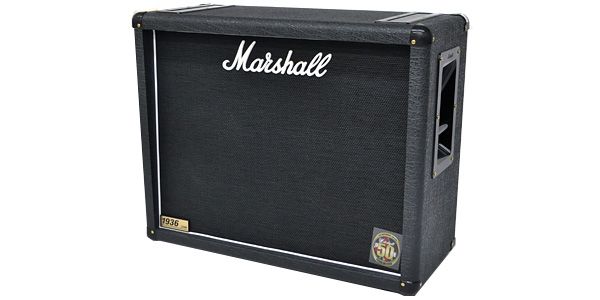
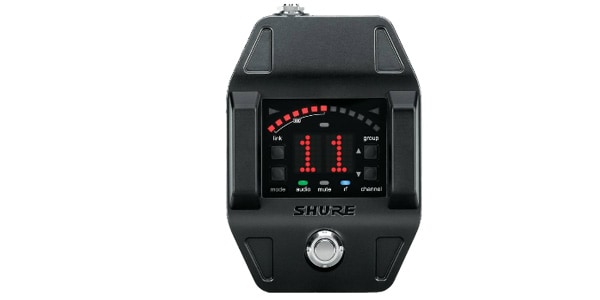
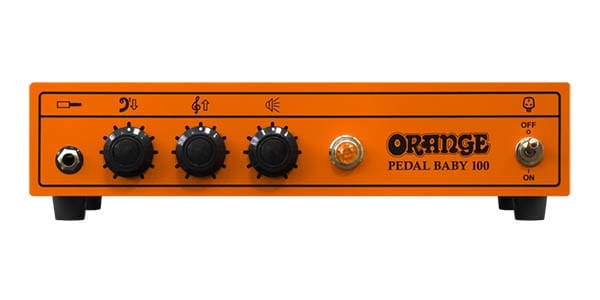

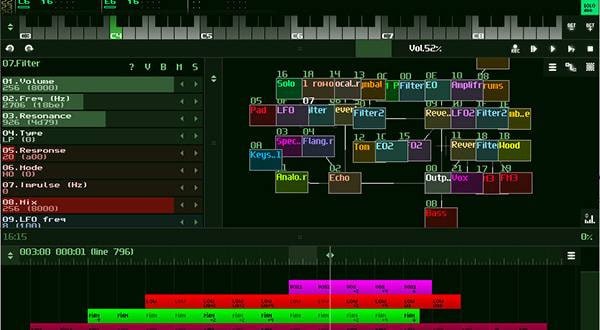



![The Road to Your Complete DIY: 2024 First Edition: Another Special Feature, Part 3: What is Speaker Damage? [Recommended for Saving]](/contents/uploads/thumbs/2/2024/5/20240530_2_27038_1.jpg)
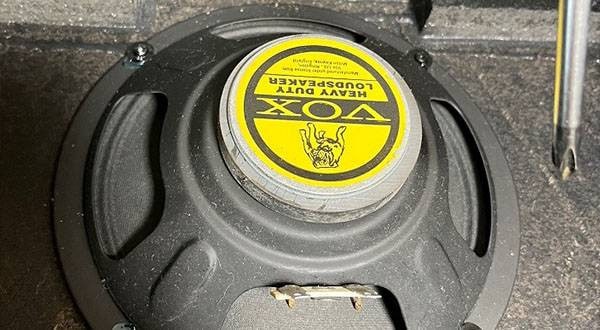




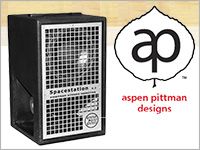 Aspen Pittman Designs特集
Aspen Pittman Designs特集
 EMINENCEスピーカー特集
EMINENCEスピーカー特集
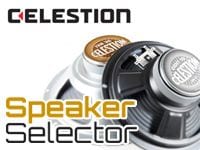 CELESTIONスピーカー特集
CELESTIONスピーカー特集
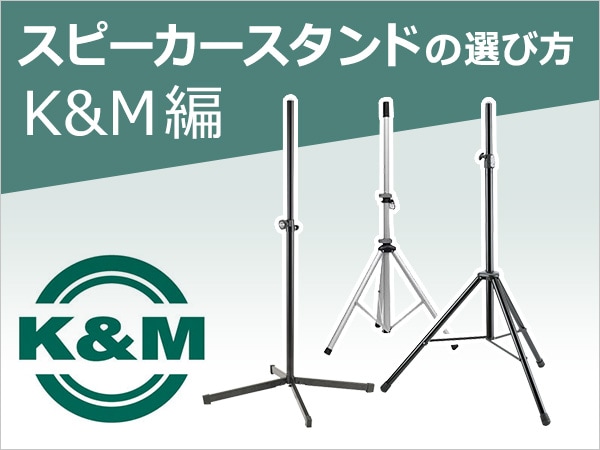 スピーカースタンドの選び方 K&M編
スピーカースタンドの選び方 K&M編
 スピーカーユニット交換
スピーカーユニット交換








